News
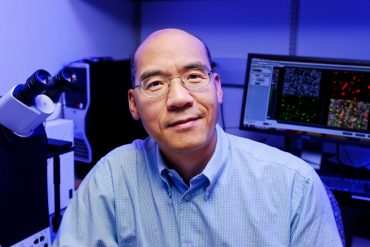
Aug. 26, 2014
Holding on: Bond LSC scientist discovers protein prevents release of HIV and other viruses from infected cells
Shan-Lu Liu, Bond LSC scientist and associate professor in the MU School of Medicine’s Department of Molecular Microbiology and Immunology. Courtesy Justin Kelley, University of Missouri Health System. Shan-Lu Liu initially thought it was a mistake when a simple experiment kept failing. But that serendipitous accident led the Bond Life Sciences Center researcher to discover how a protein prevents mature HIV from leaving a cell. Proceedings of the National Academy of Sciences published this research online Aug. 18. “It’s a striking phenomena caused by this particular protein,” Liu said. “The HIV is already assembled inside…
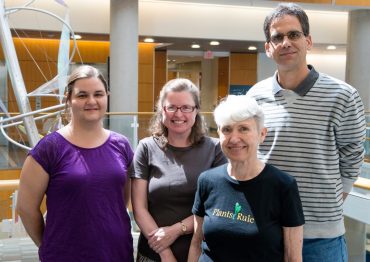
Aug. 25, 2014
Critical transport: Bond LSC team finds boron vital for plant stem cells, corn reproduction
Carbon’s next-door neighbor on the periodic table typically receives little attention, but when it comes to corn reproduction boron fills an important role. According to University of Missouri scientists, tiny amounts of boron play a key part in the development of ears and tassels on every cornstalk. The July 2014 edition of the journal Plant Cell published this research. “Boron deficiency was already known to cause plants to stop growing, but we showed a lack of boron actually causes a problem in the meristems, the stem cells of the plant,” said Paula McSteen, a Bond Life Sciences Center researcher.
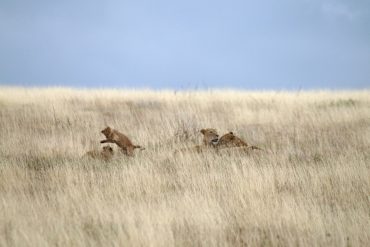
Aug. 7, 2014
A veterinarian abroad: Tanzania
In a second travel log from Bond LSC researcher Cheryl Rosenfeld, learn about the wildlife she encountered in Tanzania this summer. Through the North American Veterinary Community (NAVC), Rosenfeld furthered her veterinary education while encountering wildlife in their natural habitat. See more about the first leg of her trip to Rwanda here. By Cheryl Rosenfeld In the early morning hours, our group flew from Kigali, Rwanda to the Serengeti in Tanzania. As we began the descent to the dirt runway, we glimpsed our first sight of wildebeest and the awe-inspiring Serengeti plains and I soon boarded…
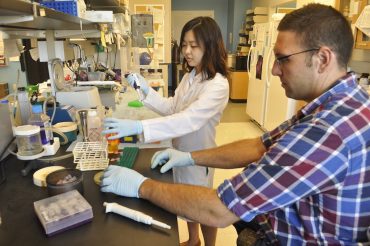
Aug. 4, 2014
Viruses as Vehicles: Finding what drives
Graduate students Yuleam Song and Dan Salamango inoculate a bacteria culture in Johnson’s lab. The inoculation takes a small portion of a virus and multiplies the sample, allowing researchers to custom-make viruses. By Madison Knapp | Bond Life Sciences Center summer intern Modern science has found a way to turn viruses —tiny, dangerous weapons responsible for runny noses, crippling stomach pains and worldwide epidemics such as AIDS— into a tool. Gene therapy centers on the idea that scientists can hijack viruses and use them as vehicles to deliver DNA to organs in the body that…
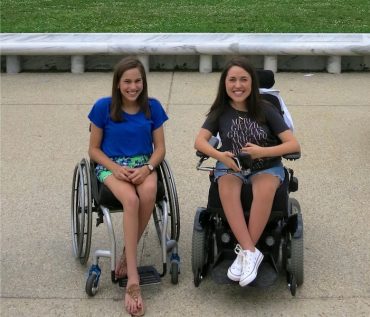
July 16, 2014
Researchers flex new muscle in SMA drug development
By Paige Blankenbuehler Lauren and Claire Gibbs share contagious laughter, ambition and a charismatic sarcasm. Both are honor students at Shawnee Mission East High School in a Kansas City suburb. They also share a neuromuscular disease called spinal muscular atrophy (SMA), designated as an “orphan disease” because it affects fewer than 200,000 people in the U.S. However, the landscape for individuals with SMA is quickly changing with the development of new drugs. More than 7 million people in the United States are carriers (approximately 1 in 40) of the so-called “rare” neurodegenerative disease, SMA. Lauren,17 (left) and Claire, 16 (right),…
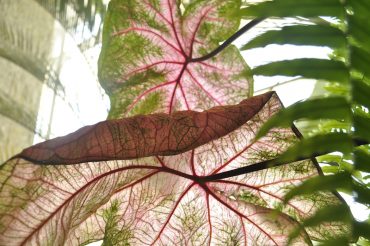
July 14, 2014
At the Bond LSC, the wall wears the plants
The unusual red color of the Lobelias leaves make them stand out among 200 other species that thrive in the 20-foot plant wall at the Bond Life Sciences Center | Paige Blankenbuehler Story by Madison Knapp | Bond Life Sciences summer intern A hidden treasure on the University of Missouri’s campus is a living and breathing work of art. In the Christopher S. Bond Life Sciences Center, a 20-foot plant wall stands as a towering tribute to the diversity of plant life and coexistence of species — a botanical landscape of more than 200 individual plants…
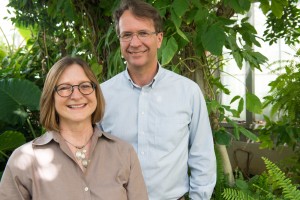
July 1, 2014
Hearing danger: predator vibrations trigger plant chemical defenses
Experiments show chewing vibrations, but not wind or insect song, cause response As the cabbage butterfly caterpillar takes one crescent-shaped bite at a time from the edge of a leaf, it doesn’t go unnoticed. This tiny Arabidopsis mustard plant hears its predator loud and clear as chewing vibrations reverberate through leaves and stems, and it reacts with chemical defenses. Plants have long been known to detect sound, but why they have this ability has remained a mystery. University of Missouri experiments mark the first time scientists have shown that a plant responds to an ecologically relevant sound in its environment. “What…
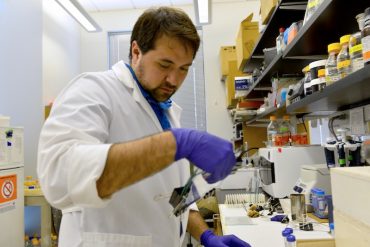
June 20, 2014
Nerve cell communication mechanisms uncovered, may lead to new therapeutic approaches for neurodegenerative diseases
Story by Madison Knapp/ Bond Life Sciences summer intern Simple actions like walking, swallowing and breathing are the result of a complex communication system between cells. When we touch something hot, our nerve cells tell us to take our hand off the object. This happens in a matter of milliseconds. This hyperspeed of communication is instrumental in maintaining proper muscle function. Many degenerative diseases affecting millions of people worldwide result from reduced signaling speed or other cellular miscommunications within this intricate network. Michael Garcia, investigator at the Christopher S. Bond Life Sciences Center and associate professor of biology at…
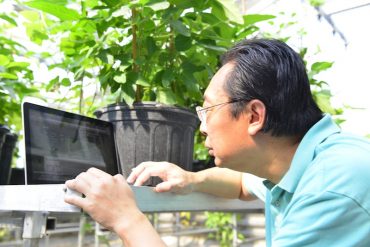
June 10, 2014
SoyKB: Leading the convergence of wet and dry science in the era of Big Data
Yaya Cui, an investigator in plant sciences at the Bond Life Sciences Center examines data on fast neuron soybean mutants that are represented on the SoyKB database. The most puzzling scientific mysteries may be solved at the same machine you’re likely reading this sentence. In the era of “Big Data” many significant scientific discoveries — the development of new drugs to fight diseases, strategies of agricultural breeding to solve world-hunger problems and figuring out why the world exists — are being made without ever stepping foot in a lab. Developed by researchers at the Bond Life…
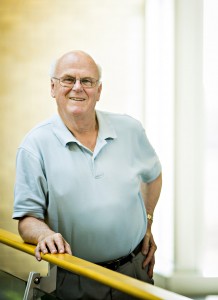
June 4, 2014
MU Scientists Successfully Transplant, Grow Stem Cells in Pigs
New line of pigs do not reject transplants, will allow for future research on stem cell therapies Story by Nathan Hurst/MU News Bureau COLUMBIA, Mo. – One of the biggest challenges for medical researchers studying the effectiveness of stem cell therapies is that transplants or grafts of cells are often rejected by the hosts. This rejection can render experiments useless, making research into potentially life-saving treatments a long and difficult process. Now, researchers at the University of Missouri have shown that a new line of genetically modified pigs will host transplanted cells without the risk of rejection.
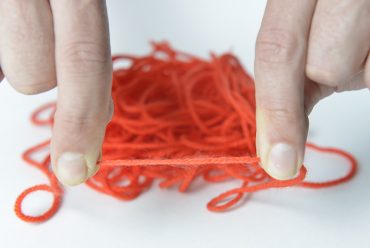
May 12, 2014
New screening tool gives scientists more control over genetic research
A tangled spool of yarn represents DNA, while the fingers holding the section represent the insulators just added by MU researchers to improve a scientific, screening tool. | Paige Blankenbuehler Here’s a scenario: You are trying to find a lost section of string in the world’s most massively tangled spool of yarn. Then try cutting that section of yarn that’s deeply embedded in the mess without inadvertently cutting another or losing track of the piece you’re after. For researchers, this problem is not unlike something they encounter in the study of genetic information in the tangled…

May 6, 2014
Trail to a Cure, Inc. helps fund training of future scientists, physcians
Over the weekend, Bond LSC HIV researchers Stefan Sarafianos, Marc Johnson and Donald Burke-Aguero joined Trail to a Cure, Inc., a Columbia nonprofit organization that helped fund important HIV research. Since 2008, the organization has raised $74,000 for HIV/AIDS research, with some of that funding going directly to the Bond LSC providing additional hours of lab research. The 2014 online fundraising is still open and donations can be made to Trail to a Cure, Inc. until the end of the month. The funding from Trail to a Cure helps Bond LSC researchers train future scientists and physicians in labs and…